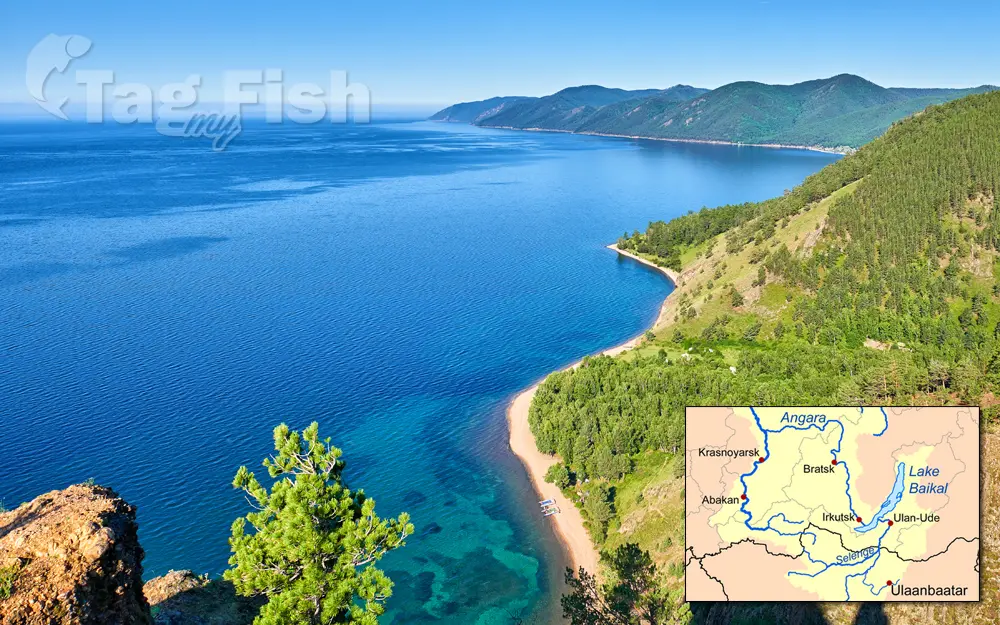Lake Baikal

General data
- Name: Lake Baikal
- Water system: Yenisey
- Water type: Natural lake
- Progression: Angara -> Yenisey -> Kara sea -> Arctic ocean -> Planet Earth
- Climates:
- Continents: Asia
- Countries: Russia
Lake Baikal is a rift lake located in Russia situated in southern Siberia between the federal subjects of Irkutsk Oblast to the northwest and Buryatia to the southeast. Lake Baikal is the worlds largest freshwater lake by volume, containing 23% of the worlds fresh surface water, more than all of the North American Great Lakes combined. It is the worlds deepest lake, with a maximum depth of 1,642 m (5,387 ft), and the worlds oldest lake, at 25–30 million years. It is the worlds seventh-largest lake by surface area. It is among the worlds clearest lakes. Baikal is home to thousands of species of plants and animals, many of them endemic to the region. It is also home to Buryat tribes, who raise goats, camels, cattle, sheep, and horses on the eastern side of the lake, where the mean temperature varies from a winter minimum of −19 °C (−2 °F) to a summer maximum of 14 °C (57 °F). The region to the east of Lake Baikal is referred to as Transbaikalia or as the Transbaikal, and the loosely defined region around the lake itself is sometimes known as Baikalia. UNESCO declared Lake Baikal a World Heritage Site in 1996. The Baikal seal or nerpa (Pusa sibirica) is found throughout Lake Baikal.[36] It is one of only three entirely freshwater seal populations in the world, the other two being subspecies of ringed seals. Fewer than 65 native fish species occur in the lake basin, but more than half of these are endemic. The families Abyssocottidae (deep-water sculpins), Comephoridae (golomyankas or Baikal oilfish), and Cottocomephoridae (Baikal sculpins) are entirely restricted to the lake basin. All these are part of the Cottoidea and are typically less than 20 cm (8 in) long. Of particular note are the two species of golomyanka (Comephorus baicalensis and C. dybowskii). These long-finned, translucent fish typically live in open water at depths of 100–500 m (330–1,640 ft), but occur both shallower and much deeper. Together with certain abyssocottid sculpins, they are the deepest living freshwater fish in the world, occurring to near the bottom of Lake Baikal. The golomyankas are the primary prey of the Baikal seal and represent the largest fish biomass in the lake. Beyond members of Cottoidea, there are few endemic fish species in the lake basin. The omul (Coregonus migratorius) is endemic to Lake Baikal, and is a source of income to locals. The most important local species for fisheries is the omul (Coregonus migratorius), an endemic whitefish. It is caught, smoked, and then sold widely in markets around the lake. Also, a second endemic whitefish inhabits the lake, C. baicalensis. The Baikal black grayling (Thymallus baicalensis), Baikal white grayling (T. brevipinnis), and Baikal sturgeon (Acipenser baerii baicalensis) are other important species with commercial value. They are also endemic to the Lake Baikal basin.

 English
English
 Spanish
Spanish
 German
German
 French
French
 Serbian
Serbian
 Russian
Russian

